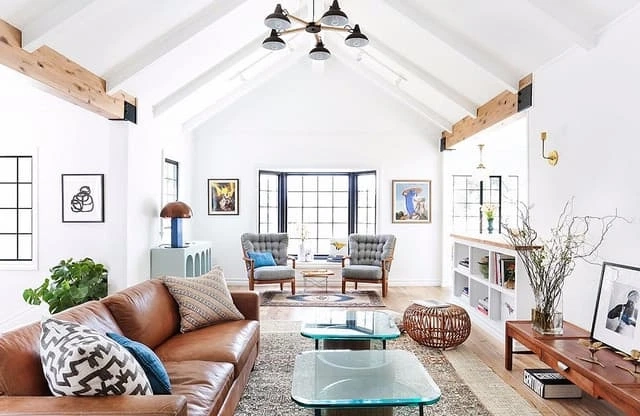Line, Form, and Other Interior Design Elements
We've all experienced the annoyances of interior design. There will always be hurdles to your idea, whether you decide to go in a new path with existing furnishings or are beginning from over in a new home.
Interior design may appear intimidating, but it is not all that difficult. Interior design becomes much easier to understand when broken down into its basic components.
Along with the seven interior design principles, there are seven design elements that must work in parallel to create a visually appealing room. The results of using these design elements as a guide for decorating your home will be nothing short of spectacular!
What Are the 7 Elements of Interior Design?
SpaceTextureLightColorPatternLineForm1. Space
Space is a straightforward design element that refers to the physical boundaries of a room. Unless you are an architect, you usually do not get to choose the dimensions of the room you are designing, so you must find a way to make use of the existing space and layout.
How to Use Space
There are limitations to how much you can fit into a room due to space. Don't overcrowd your room with furniture and accessories if it's small. If you have a large room, don't skimp on the furnishings.
2. Texture
Texture is described as "the feel, look, or consistency of a surface." It can relate to rough or smooth finishes, shiny or dull surfaces, and soft or coarse materials.
If you've ever decorated a space, you realize the significance of texture. Everything from textiles and furniture to decorative items adds texture to a room.
How to Use Texture
Texture can be used to highlight existing elements in a room or to create dimension to a space. Smooth, glossy finishes on furnishings in a tiny, dark room may impart a reflected aspect and give the area an impression of natural light. Rough textures, on the other hand, can help balance an abundance of natural light in a large, bright space.
3. Light
The term "light" applies to both natural and artificial light sources. Light is directly related with texture and also with color—color cannot exist without a light source.
How to Use Light
Light may serve to set the tone of a room. Subdued lighting often creates a pleasant, romantic atmosphere. Natural light-filled rooms, on the other hand, tend to seem bright and cheery.
Light also has a practical purpose in home design. Light can be utilized to brighten working, eating, and reading spaces, as well as to highlight certain objects in a room, such as paintings, sculptures, or other works of art.
4. Color
Color, along with light, is often regarded as one of the most important components of interior design. It is used to generate aesthetically pleasant combinations and also has psychological effects. You've probably heard that the color red increases hunger. As a result, it is frequently utilized in dining rooms.
How to Use Color
Colors can literally transform a home. A dark, depressing space can become bright and cheerful with a simple color overhaul. Color can also create specific moods and looks. Using cool and neutral colors can convey peace and tranquility.
Rich jewel tones can make a drab space feel luxurious and regal. Incorporating reds, oranges, and yellows into a sterile, white room can add a sense of warmth and comfortability.
5. Pattern
Pattern is commonly used in conjunction with color as a design element. It is utilized in interior design to provide vitality and interest to a room's furniture. Pattern, like texture, may be utilized to give surfaces more depth.
How to Use Pattern
Typically, patterns are made by repeating designs in textiles, carpets, tiles, painting methods, and wallpapers. Consider how boring a space would be without design!
6. Line
In interior design, line refers to the "lines" generated by a room's furniture and architecture. The lines of a room give it structure and form. In interior design, line is responsible for harmony, contrast, and unity. It represents movement and directs the eye across a space.
How to Use the Different Types of Lines
Line in interior design refers to the "lines" generated by a room's furniture and architecture. The lines of a room give it structure and shape. Line is responsible for harmony, contrast, and unity in interior design. It represents movement and directs the eye around a room.
Horizontal lines are most commonly encountered in furniture such as tables, chair backs, bookshelves, and media centers. They play an essential function in interior design by balancing the vertical lines that appear in most areas.
Look around your home for instances of vertical lines; you'll find them all throughout. Windows, drapes, entrances, columns, and tall furniture all contribute to the appearance of height in your house.
7. Form
In the field of interior design, the terms form and shape are frequently used interchangeably. It is similar to line in that it may be utilized to generate various sensations and effects when used according to interior design principles.
How to Use Form
A long dining room table placed in a rectangular area may provide a feeling of harmony. Add a series of spherical pendant fittings above the table for contrast and balance. However, using numerous diverse shapes in one area might result in a confused and disconnected design.


